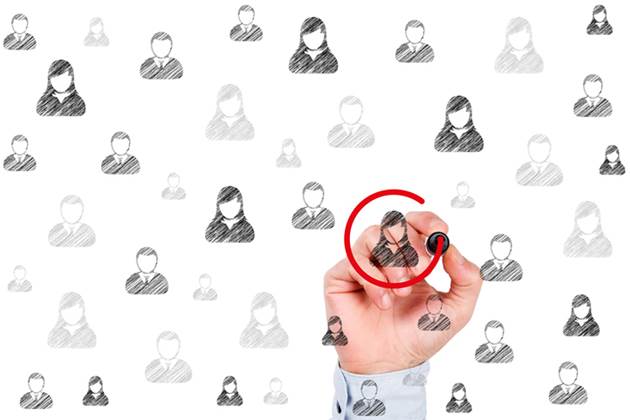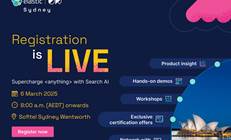For years marketing technology vendors have pushed personalisation as a key benefit of their offerings. But as with Robert Solow's famous paradox on the computer industry, the evidence for productivity gains was everywhere but in the statistics.

Too often the martech personalisation pitch felt like a solution searching for a problem. This was especially pronounced in the adtech sector which notoriously plundered and packaged consumer privacy for two decades until Cambridge Analytica, Facebook, Google's third-party cookie retreat, and finally, Apple's App Transparency Tracking and other initiatives brought the curtain down.
You only have to look at Critieo's share price retreat in 2017 to understand how brutal and sudden the adjustment was, and it was smacked as people were still only talking about GDPR and Apple's privacy blitz. (Of course, all those ad fraud accusations didn't help.)
Adtech vendors convinced themselves consumers were along for the ride, but consumers mostly just found their behaviour egregious and creepy, and occasionally the courts found it illegal.
By 2019 Gartner was warning that most CMOs would abandon personalisation because the integration was too hard. However, Adobe's 2022 marketing Summit if anything doubled down on personalisation more aggressively than ever.
So what gives?
In the simplest terms, Adobe has moved the cheese.
More precisely its definition has evolved to encompass how consumers view personalisation rather than only how marketers see it.
For a marketer, personalisation is about messaging and selling. It's not necessarily bad. If I'm the customer of a pet supply business and I own a dog, I don't really want to see ads for cat food.
But I'd also prefer the pet food business to invest its money using my data to make it easier to do what I want to do — for instance, get in and out of their site with those delicious and tasty treats for my dog, (Palkia, he's a good boy) as quickly and simply as possible, rather than investing its treasure using my data to trying and flog me for more merchandise.
That's the big change. Adobe's view of personalisation now more explicitly includes the customer's conception of personalisation, not just the brand's.
Simon Tate, president APAC for Adobe acknowledged to Digital Nation Australia that the company’s definition of personalisation has evolved.
He said personalisation as late as 2019 was designed around third-party cookies — and technology like DMPs — and it was fundamentally built around the idea of users segmented by demographics.
In 2022, personalisation is about a single user — a person. That is what is now changing, he said. “What has made that possible is that companies have had no choice but to look at the first-party data."
Organisations such as insurance agencies, airlines and banks have a plethora of data on consumers in data swamps — not data lakes — and don’t know what to do with it, Tate told Digital Nation Australia.
“They don't know how to monetise it. There's been a disconnect between the custodians of the first-party data, which has been traditionally the office of the CIO and the people that need to turn their first-party data into meaningful personalised journeys through either customer acquisition or customer engagement and ultimately monetisation, and that is the office of the CMO,” Tate explained.
For much of Adobe’s time, its mainstay was the office of the CMO or the wider marketing department initially for its market-leading creative products and in recent years for its marketing technology cloud.
The big change in recent years, said Tate is that Adobe also invested heavily in building capabilities to better connect with and understand IT departments and CIOs.
“Everyone knows us for the marketing stack but what's now changed is we're addressing squarely the concerns of the office of the CIO."
Indeed Tate went so far as to say the quiet part out loud: "Unless the custodians of all of this first-party data, allow us to actually access the data, personalisation is a myth."
“At least personalisation in the modern-day context, which is you as an individual, as opposed to you as a part of a segment. That is the fundamental shift that I've seen in the last couple of months and it's really accelerated.”
He said the reason many companies still haven’t embraced first-party data is due to their antiquated systems — what IT leaders call the technology debt.
“Part of the reason why many companies up to this point haven't been able to unlock the power of the first-party data is that they're dealing with legacy tech and they are not built for agile integration," Tate said.
Adobe can mitigate this by taking the application to the data, rather than expecting IT to take the data to the application, he said.
“That is the killer competitive differentiator of the Adobe Experience Platform (AEP) because what AEP can do is kick off a campaign and we don't care where the data is. We are only interested in the data segments, or the data elements that are specific to that particular campaign.
“The power of the software is we'll stitch the profile if you fit the brief and you will be able to kick off a campaign regardless of where that data elements or data set actually sit," Tate added.










.png&w=120&c=1&s=0) Tech in Gov 2025
Tech in Gov 2025
 Forrester's Technology & Innovation Summit APAC 2025
Forrester's Technology & Innovation Summit APAC 2025
 Integrate Expo 2025
Integrate Expo 2025
.png&w=120&c=1&s=0) Security Exhibition & Conference 2025
Security Exhibition & Conference 2025
 Digital As Usual Cybersecurity Roadshow: Brisbane edition
Digital As Usual Cybersecurity Roadshow: Brisbane edition











.jpg&h=140&w=231&c=1&s=0)



